Today I have a three-song medley of beautifully harmonized songs that reveal their early roots.
The first one is Oi Tunjuska, a Finnish folk song. It is included in the Suomen Kansan Vanhat Runot (The Ancient Songs of the Finnish People), the vast (about 100,000 songs in 32 printed volumes) collection of traditional folkloric songs, animal calls and incantations compiled by the Finnish Literary Society from 1908 to 1948. That work got this song from an older folklore collection called the Kalevala in which Finnish oral history was documented, and is considered to be the national epic of Finland.
If I could read Finnish I would be able to track down much more information about this song. (So it is undoubtedly better for my time management that I am not able to read that language!) The CD’s liner notes say: “The song tells the story of Mary, who comes to the stable alone and cold. She is comforted by the lowly animals who take pity on her, warming her with their breath.”
The recording is from a live show held in St. Paul, Minnesota’s historic Fitzgerald Theatre in 2004 that was produced by and starred Peter Ostroushko. You may remember him as the long-time music director for Garrison Keillor’s radio show Prairie Home Companion which was broadcast from that theatre. Ostroushko’s own Christmas show was immortalized on Borderland Production’s CD Peter Ostroushko – Heartland Holiday, from which I got this song.
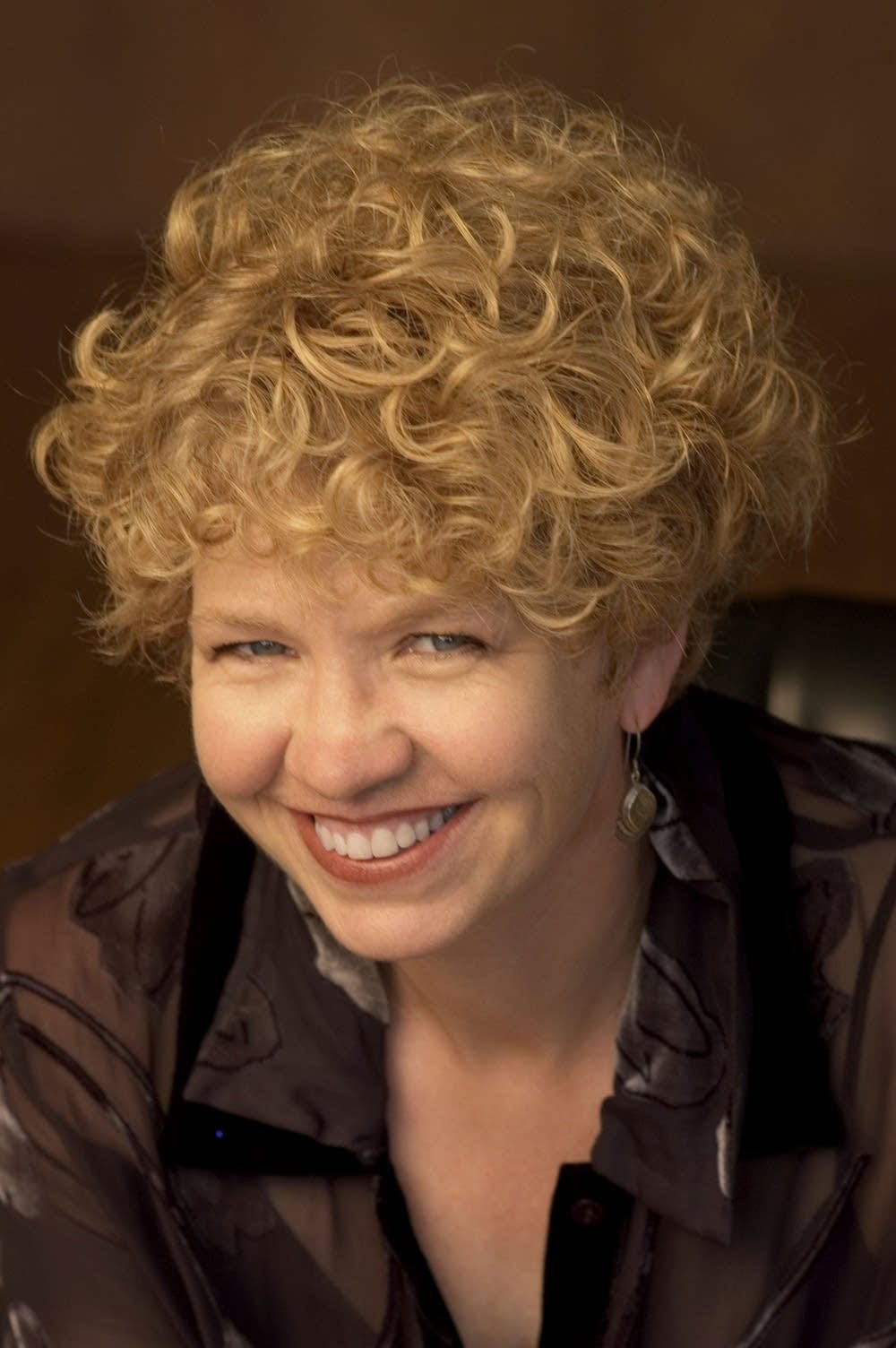
The lead singer is Minneapolis-St. Paul resident Ruth MacKenzie, who one online source says is called “the Janis Joplin of folk” in Finland and Sweden. A few years after this concert she arranged her own concert featuring this and other songs from the Kalevala about Mary, and her recordings of songs from that show was later put on CD. She is accompanied here by the Nowytski sisters, Natalie and Olenka, who (I suspect because of the exposure they got from this concert and album) put out their own CD of Ukrainian Christmas music in 2006.
Riu Chiu, more commonly known as Riu Riu Chiu, is a Spanish villancico (medieval dance song) of unknown origins, although some music historians of that genre attribute it to the great Catalonian composer Mateo Flecher the Elder (1481–1553). A translation is available in its Wikipedia entry.
Because I collect and study Christmas music, and generally seek out non-mainstream sources for it, my perspective on which Christmas songs are well-known can be somewhat unreliable. But I suspect that this song is one of those that most people would instantly recognize and associate with Christmas when they hear it, but not consider it to be one of the core “Christmas favourites.”
The singers of this song are – wait for it – the Monkees! People (or at least North Americans) of my age will instantly recognize that name. For you youngsters, they were a pop-rock band in the mid-1960s whose chart-topping hits included I’m a Believer, Daytime Believer, and Last Train to Clarksville.
Actually, they were the first of what has since come to be called a boy band – a pop group of young men purposely assembled to make music and have an image designed to appeal primarily to a young teenage audience. They were formed by producers to star in a TV show that was modeled after the Beatles’ very successful first movies A Hard Day’s Night and Help! and depict the supposedly zany private lives of the group (while also giving them a TV platform to promote their recordings.)
The first member chosen for the cast was Davy Jones, who had been nominated for a Tony Award for his portray of the Artful Dodger in the hit Broadway show Oliver! The rest were cast using a Hollywood “cattle call” audition. Winning out over 434 other applicants were Micky Dolenz, Michael Nesmith, and Peter Tork. All except Jones were multi-instrumentalist musicians and vocalists.
Making a TV show is a rushed business and at first it squeezed out the time needed for these new colleagues to develop as a band before filming began (and Davy had to learn to play drums for the band to have the proper conformation of musicians to emulate the Beatles.) In the beginning of their first season, and on their first album, they sang the vocals but the music was played by studio musicians. Without the public knowing that the TV show and first album were a big hits and they became pop music celebrities. At the same time and the cast members’ musicality as a band began to gel and Michael Nesmith proved to be a talented songwriter. When the time came for contract negotiations for the second season they together had the leverage to insist that from then on they would sing and play their own songs, and they got some degree of control over the choice of songs.

Riu Chiu was performed as part of the 2nd season Christmas show, which aired on Dec 23, 1967, and I ripped it from the official video. You can watch that video by clicking on the above photo. Actually, this performance is quite out-of-character for their TV personas. They were usually portrayed either performing or as zany, fun-loving young cut-ups (i.e., just like the Beatles in their movies.) Despite the band’s growing popularity the TV show lasted only three years. One factor may have been that rumours persisted that they did not play their own instruments even though that was no longer true. But I suspect that the main reason was that there is only so much that people could take of the show’s Benny Hill style of frantic physical comedy and weak story lines. Personally, I didn’t watch it much. By that time my own musical interests had moved away from pop music and into folk music.
The Monkees broke up with the demise of the TV show. There is undoubtedly a story behind that but I am not going to look into it. (Step 2!) Each of the performers moved on to solo musical and acting careers. They had a few reunion tours, but now they have all passed away except Micky Dolenz, who is the lead singer in this song. (For an unexpected side-story about the Monkees check out this BBC News article.)
The group’s Wikipedia article quotes 1960s music historian Andrew Sandoval’s summary of their impact on pop music:
[The Monkees] pioneered the music video format and paved the way for every boy band that followed in their wake, from New Kids on the Block to 'N Sync to the Jonas Brothers, while Davy set the stage for future teen idols David Cassidy and Justin Bieber. As pop stars go, you would be hard pressed to find a successful artist who didn't take a page from the Monkees' playbook, even generations later. Monkee money also enabled [producers] Rafelson and Schneider to finance Easy Rider and Five Easy Pieces, which made Jack Nicholson a star. In fact, the Monkees series was the opening salvo in a revolution that brought on the New Hollywood cinema, an influence rarely acknowledged but no less impactful.
Kinderly is performed by the professional British ensemble Mediæval Baebes, founded in 1996 by the late Dorothy Carter and music director and composer/arranger Katherine Blake who continues in those roles to the present time. Besides touring and recording, their voices have been heard in the soundtracks of several movies and TV series. This song is typical of their signature angelic-haunting vocal style. Over the years the group has varied considerably in size from six to twenty singers. They currently have six members, but when this song was recorded they had twelve.
This song was on their inaugural 1997 album Salva Nos, but I got it from their now out-of-production 2003 Christmas album Mistletoe & Wine. I cannot find the CD in my sizeable collection now; it is probably misfiled. (Where could I have filed it if not with medieval music, vocal ensembles, or acapella harmony CDs?) That is especially unfortunate because they have great liner notes and I have a lot of questions about this song.
Such as: Is this an authentic ancient text and melody, or a modern composition written in Medieval English to sound authentic? It could be either of those: The Mediæval Bæbes aren’t one of those groups who assiduously strive for historical authenticity. Their performances feature period instruments, and are certainly historically informed, but they seem to strive more for STYLE. And what style! Check out this video of their interpretation of the notably-authentic Personent Hodie.
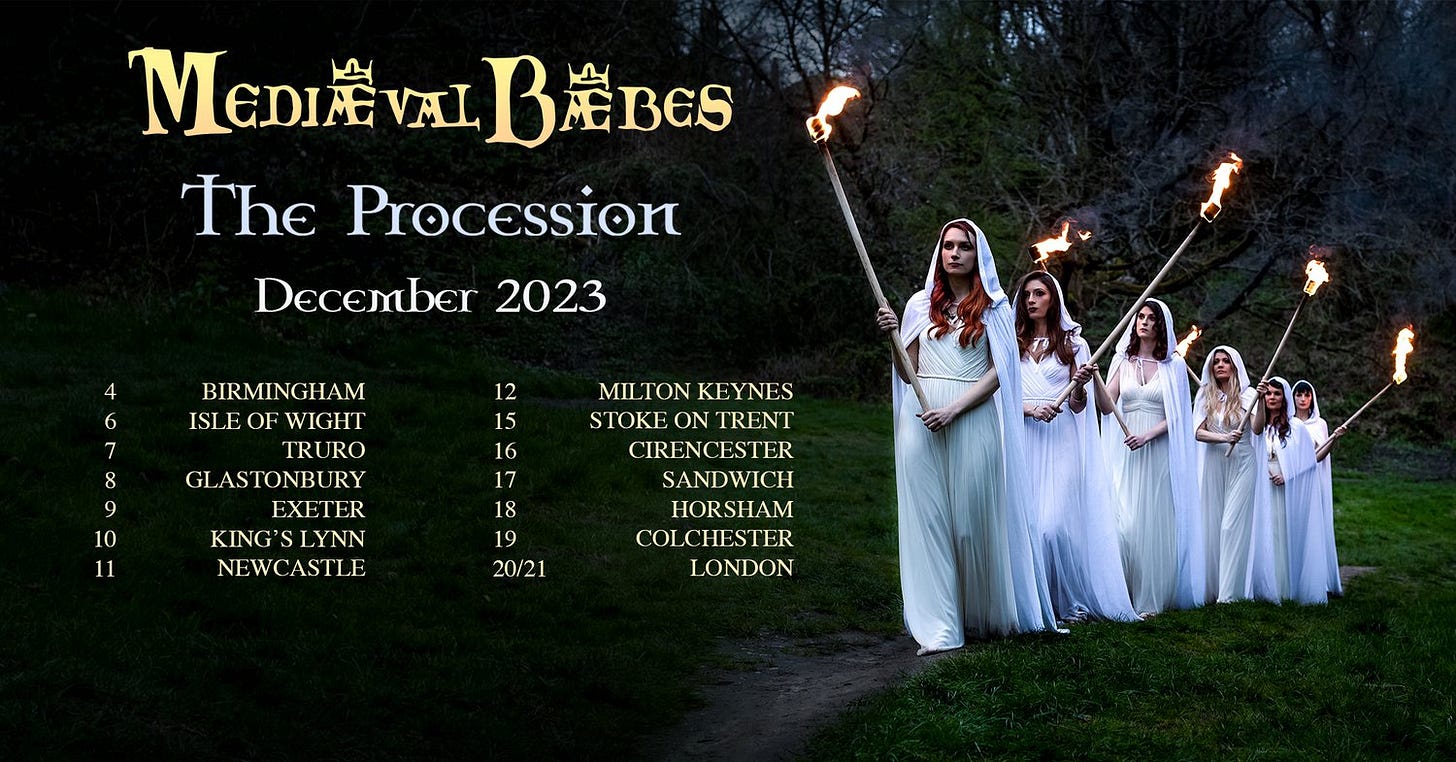
I was able to find the lyrics for Kinderly online
Kinderly is now my coming
Into this werld with teres and cry
Litel and povere is min having
Britel and sone I falle from hi
Scharp and strong is my deying
I ne woth whider schal I
Foul and stinkande is my roting
On me, Jhesu, you have mercy!



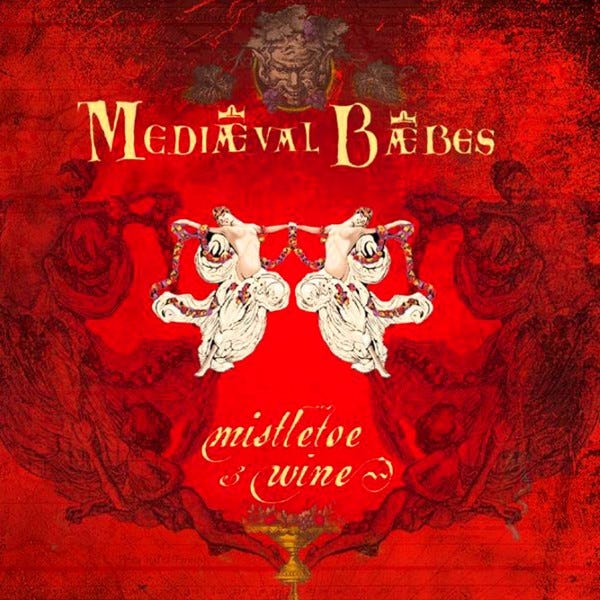

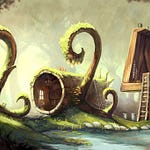


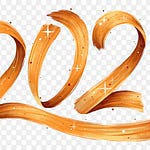

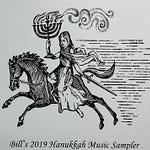
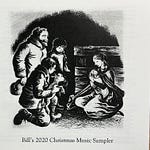

Share this post